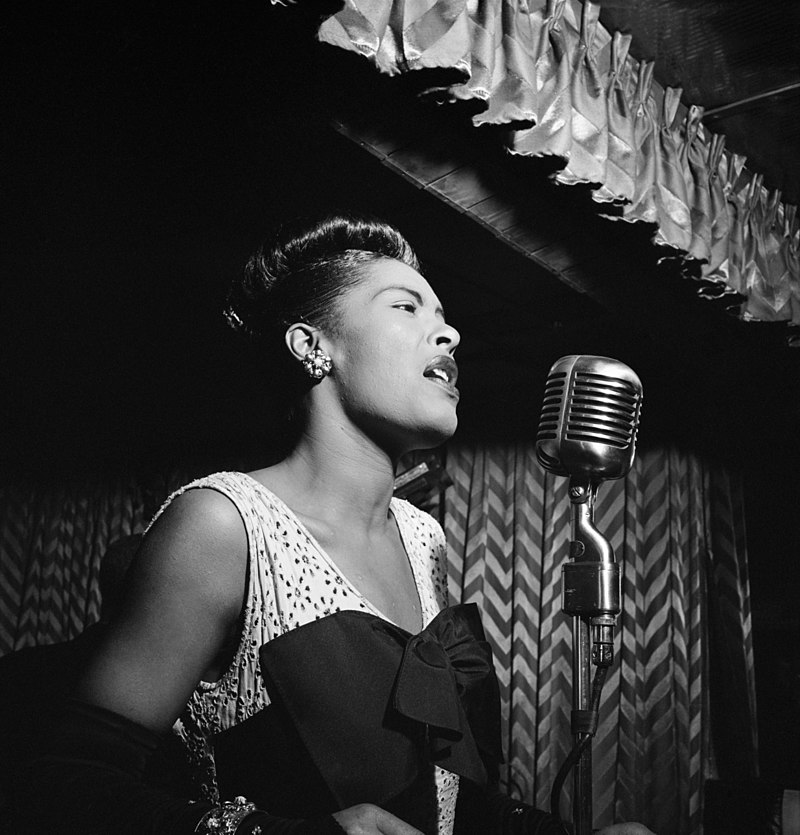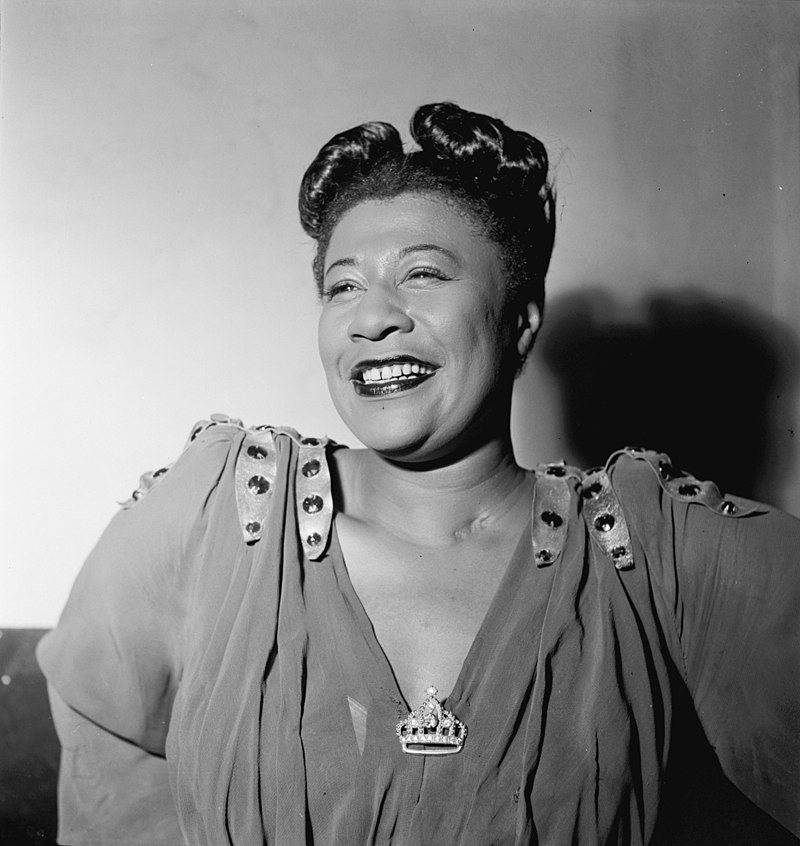
Billie Holiday
The color barrier became musically evident in the music of Billie Holiday. "Lady Day," as she is often called, remains on top of the list of jazz's preeminent singers-not for her vocal range or scatting skills but for her ability to reach into the emotional core of the songs she sang. Her emotionally turbulent life became romanticized in her autobiography Lady Sings the Blues.
Holiday was discovered by John Hammond, promoter of Benny Goodman, and he arranged for her to sing with Goodman's band in 1933. Holiday spent the next few years singing with some of the finest bands and small combos around the country.
However, in 1937, she met her musical match in the tenor sax styling of Lester Young. The recordings these two artists made have had lasting impact on singers and soloists ever since. Young and Holiday reunited in 1957 for a television show. Years of smoking, heroin abuse and alcoholism had taken a substantial toll on Holiday's voice, but her poignant performance of "Fine and Mellow" shows how Holiday was left to her own inner emotional core to deliver a song (see also Discover Video).
♫ ![]() Fine and Mellow
Fine and Mellow
Billie Holiday
Ella Fitzgerald
Ella Fitzgerald (1917-1996) grew up listening to Louis Armstrong and wanted to be a dancer. Instead she became one of the foremost interpreters of American popular music and is remembered for her uncanny ability to imitate musical instruments while singing. Her first success was singing with the Chick Webb Orchestra where she made $12.50 a week. Her recording of a popular novelty song "A-Tisket, A-Tasket," a tune she co-wrote, brought her widespread recognition (see Discover Video).
Fitzgerald eventually joined forces with jazz impresario Norman Ganz.
His Jazz at the Philharmonic concert series secured Fitzgerald's status as arguably the greatest jazz singer of all time. Ganz built his record company Verve around her talent and began documenting a definitive collection of the Great American Songbook with discs devoted to single composers like Cole Porter, Duke Ellington, and George Gershwin. These recordings demonstrate the wide range of Fitzgerald's vocal ability and interpretive power.





"Blues developed in the southern United States after the American Civil War (1861-65) and was largely played by Southern black men, most of whom came from the milieu of agricultural workers."






